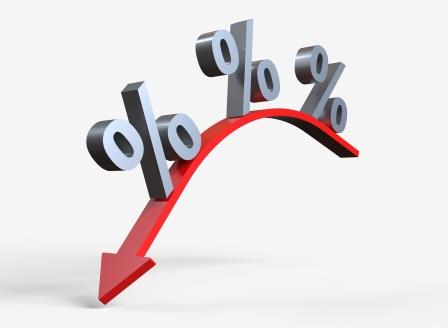An interest rate in the market is the value given to the money flow in the economy at a point in time. It acts as the key mediator between lenders and borrowers. Basically, the interest rate is determined by the demand and supply of money i.e., the need and availability of funds. In an efficient market, it moves in tandem with the flow of activities in the bazaar. However, in a local bazaar, it could be inefficient depending on the strength of the business, seasonal nature, risk of the individual, size of the financing, and availability of lenders and borrowers.
The setup of interest rate in a country is decided by the central banks. In India, it is based on the repo rate, which is the repurchase rate provided by RBI to banks while buying govt securities, on a short-term basis. This rate depends on aspects like status of domestic economy, the world’s monetary policy, inflation, and liquidity position. Based on repo rate, the next set of rates are determined, like bank rate and MCLR. Bank rate is the loan rate charged by central banks on banks, while MCLR (marginal cost of lending rate) is the minimum lending rate that should be charged by banks to customers.
India’s current repo rate is 5.4%, while bank rate is at small premium of 5.65%. MCLR varies based on the cost structure of banks. RBI’s MCLR rate (overnight), the lending rate between two banks, is 6.7% to 7.5%.
Here we may feel that RBI is controlling the financial and interest rate of India. Otherwise, it serves as an intellectual intermediary of a growing democratic economy. RBI must balance the mood of the world’s financial market, domestic economy position, managing govt’s financial needs, and strength of INR. The monetary strength of a country depends on the efficacy of a central bank else it has a dire impact on the outlook of the country, currency, inflation, and interest rate.
Assuming that the world is an equilibrium state, generally, higher the interest rate of a country, stronger will be the economy and currency because of strong money flow. However, the globe is made up of balancing markets from developing to emerging and developed countries. Geo-political, climate, economic and domestic risk bubbles in the financial markets. Risk of the world and country constantly changes, determining the strength of the economy and currency. Hence, higher the risk higher will be the interest rate and vice versa.
Generally, risk on a daily basis is the deviation of the parameter factor or the measurement of standard deviation during a period. Higher the variation, higher will be the risk. Qualitatively, it will depend on macroeconomic factors like size and strength of the economy, growth, socio-political scenario, and monetary policies. The interest rate cycle of a country moves in a negative slope (lower trend) as the economy fortifies.
Taking an example of a developed market like the US, the treasury 10-year bond yield peaked in 1980 at 16%, then fell to ~6% in 2000 and 2.7% today. This is aided by the fact that the US is the strongest economy and the USD is the world’s reverse currency. Similarly, we can expect an analog long-term trend for India’s interest rate cycle if the economy strengthens in the future. In the short term, it will be volatile based on local and global factors.
First published in Economic Times








